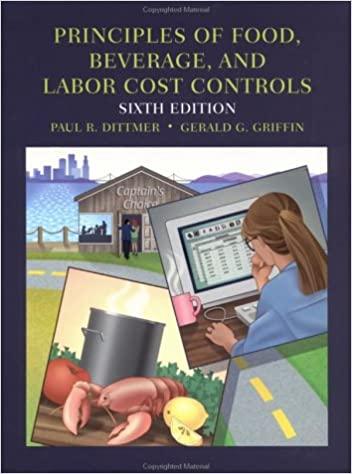Question
Private Manufacturing Company acquired 90 percent of Secret Corporations outstanding common stock on December 31, 20X5, for $1,152,000. At that date, the fair value of
Private Manufacturing Company acquired 90 percent of Secret Corporations outstanding common stock on December 31, 20X5, for $1,152,000. At that date, the fair value of the noncontrolling interest was $128,000, and Secret reported common stock outstanding of $500,000, premium on common stock of $280,000, and retained earnings of $420,000. The book values and fair values of Secrets assets and liabilities were equal except for land, which was worth $30,000 more than its book value.
On April 1, 20X6, Private issued at par $200,000 of 10 percent bonds directly to Secret; interest on the bonds is payable March 31 and September 30. On January 1, 20X7, Private purchased all of Secrets outstanding 10-year 12 percent bonds from an unrelated institutional investor at 98. The bonds originally had been issued on January 1, 20X1, for 101. Interest on the bonds is payable December 31 and June 30.
Since the date it was acquired by Private Manufacturing, Secret has sold inventory to Private on a regular basis. The amount of such intercompany sales totaled $64,000 in 20X6 and $78,000 in 20X7, including a 30 percent gross profit. All inventory transferred in 20X6 had been resold by December 31, 20X6, except inventory for which Private had paid $15,000 and did not resell until January 20X7. All inventory transferred in 20X7 had been resold at December 31, 20X7, except merchandise for which Private had paid $18,000.
At December 31, 20X7, trial balances for Private and Secret appeared as follows:
| Item | Private Manufacturing | Secret Corporation | ||
|---|---|---|---|---|
| Debit | Credit | Debit | Credit | |
| Cash | $ 39,500 | $ 29,000 | ||
| Current Receivables | 112,500 | 85,100 | ||
| Inventory | 301,000 | 348,900 | ||
| Investment in Secret Corporation Stock | 1,240,631 | |||
| Investment in Secret Corporation Bonds | 984,121 | |||
| Investment in Private Manufacturing Bonds | 200,000 | |||
| Land | 1,231,000 | 513,000 | ||
| Buildings and Equipment | 2,750,000 | 1,835,000 | ||
| Cost of Goods Sold | 2,009,000 | 430,000 | ||
| Depreciation and Amortization | 195,000 | 85,000 | ||
| Other Expenses | 643,000 | 205,874 | ||
| Dividends Declared | 50,000 | 40,000 | ||
| Accumulated Depreciation | $ 1,210,000 | $ 619,000 | ||
| Current Payables | 98,000 | 79,000 | ||
| Bonds Payable | 200,000 | 1,000,000 | ||
| Premium on Bonds Payable | 4,268 | |||
| Common Stock | 1,000,000 | 500,000 | ||
| Premium on Common Stock | 700,000 | 280,000 | ||
| Retained Earnings, January 1 | 3,027,695 | 468,606 | ||
| Sales | 3,101,000 | 790,000 | ||
| Other Income | 134,121 | 31,000 | ||
| Income from Secret Corporation | 84,936 | |||
| Total | $ 9,555,752 | $ 9,555,752 | $ 3,771,874 | $ 3,771,874 |
As of December 31, 20X7, Secret had declared but not yet paid its fourth-quarter dividend of $10,000. Both Private and Secret use the effective interest method for the amortization of bond discount and premium. On December 31, 20X7, Privates management reviewed the amount attributed to goodwill as a result of its purchase of Secret common stock and concluded that an impairment loss in the amount of $25,000 had occurred during 20X7 and should be shared proportionately between the controlling and noncontrolling interests. Private uses the fully adjusted equity method to account for its investment in Secret.
Required:
- Compute the amount of the goodwill as of January 1, 20X7.
- Compute the balance of Privates Investment in Secret Corporation Stock account as of January 1, 20X7.
- Compute the gain or loss on the constructive retirement of Secrets bonds that should appear in the 20X7 consolidated income statement.
- Compute the income that should be assigned to the noncontrolling interest in the 20X7 consolidated income statement.
- Compute the total noncontrolling interest as of December 31, 20X6.
- Present all consolidation entries that would appear in a three-part consolidation worksheet as of December 31, 20X7.
- Prepare and complete a three-part worksheet for the preparation of consolidated financial statements for 20X7
Step by Step Solution
There are 3 Steps involved in it
Step: 1

Get Instant Access to Expert-Tailored Solutions
See step-by-step solutions with expert insights and AI powered tools for academic success
Step: 2

Step: 3

Ace Your Homework with AI
Get the answers you need in no time with our AI-driven, step-by-step assistance
Get Started


